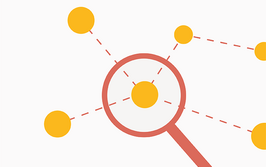
A Disease With Many Faces
For patients with triple-negative breast cancer, insight into the tumor’s molecular subtype and microenvironment can have significant effects on outcome
At a Glance
- Triple-negative breast cancer has a wide range of potential outcomes
- With six different molecular identifiers, a “one-size-fits-all” treatment approach is implausible
- Molecular subtyping is vital to determine the best treatment for each patient
- The ideal test should be cost-efficient, high-throughput, and feature a rapid turnaround time
Patients with triple-negative breast cancer (TNBC) experience a wide range of treatment outcomes – from rapid recovery with minimal therapy to highly resistant and recurrent disease. However, with what appears to be a single diagnosis, why are the response rates so different? The truth: TNBC is not, in fact, a single entity. Rather, it is a plethora of different subtypes distinguished by their molecular expression profiles.
The value of subtyping
The treatment of triple-negative breast cancer (TNBC) has been challenging due to the absence of well-characterized molecular targets and the heterogeneity of the disease. TNBCs comprise up to 20 percent of all breast cancers (up to 45,000 women diagnosed in the US each year). This type of cancer occurs more frequently in young and African-American women and has higher rates of metastatic recurrence and poorer prognosis than other breast cancers, with a five-year survival of only ~30 percent (1–3). A critical unmet need to improve the outcome of women with TNBC lies in the development of diagnostic methods that address the heterogeneity of disease and differentiate molecular subtypes possessing unique biology, molecular genetic features, and therapeutic targets.
The Pietenpol group originally molecularly classified TNBC into six distinct subtypes, each with unique biologic features and specific signaling pathway deregulation signatures (4). To accomplish this feat, retrospective gene expression data from Vanderbilt-Ingram Cancer Center (VICC) clinical trials was analyzed, as well as 21 publicly available datasets from eight countries (3,247 breast cancers in total). This worldwide dataset included nearly 600 TNBCs, which were used to classify the disease into two basal-like (BL1, BL2), mesenchymal and mesenchymal stem-like (M, MSL), immunomodulatory (IM), and luminal androgen receptor (LAR) subtypes. In addition to further validating these TNBC subtypes using The Cancer Genome Atlas (TCGA) data, the VICC group developed “TNBCtype,” a web-based subtyping tool for TNBC tumor specimens using GE metadata and classification methods (5).
Importantly, evidence supportive of the clinical utility of TNBCtype has already been demonstrated, based on the ability of the algorithm to predict differential responsiveness to the current standard of care (taxane- and anthracycline-based chemotherapy) for TNBC. Subtyping analysis of 130 patients who received neoadjuvant taxane and anthracycline-based therapy revealed that the BL1 subtype has the highest pCR rate at 52 percent, whereas BL2 shows the lowest with none at all (6). Clinical responses to both neoadjuvant treatment arms found BL2 to be significantly associated with poor response.
Recently, a refined subtyping tool reduced the original Pietenpol 2,188-gene expression algorithm to 101 genes while retaining the ability to subtype TNBC tumors similar to the original algorithm and to predict patient outcomes (7). This newly refined assay also displayed the capability to identify more than one subtype – called a dual subtype, with a primary and potential secondary subtype – in any given patient, which should better reflect tumor heterogeneity. The assay also separately classifies each patient as either IM-negative or IM-positive to provide possible insight into the tumor immune-microenvironment. Additionally, the 101-gene model also demonstrated the significant association of the BL1 subtype with improved response (7).
Ultimately, it appears that BL1 patients may benefit from standard chemotherapy, whereas BL2 patients may not benefit – but still experience unnecessary and sometimes harmful side effects. In addition, the BL1 and mesenchymal categories are also most closely associated with a BRCA1-like status, meaning that they may respond well to PARP inhibitors (8).
Learning about LAR
The LAR subtype is enriched for hormonally regulated pathways and is dependent on androgen receptor (AR) signaling. Although AR can be expressed in multiple molecular subtypes of TNBC, the LAR subtype has the highest level of AR expression. It is predominantly subclassified in the non-basal subgroup and represents a novel subtype of TNBC with a distinct prognosis that offers an opportunity to develop targeted therapeutics. Cell lines of this subtype, the growth of which is driven by AR signaling, are uniquely sensitive to AR antagonists (4). LAR tumors and cell lines also have a high frequency (~40 percent) of PIK3CA mutations that confer responsiveness to PI3K inhibitors (9) and may benefit from PI3K inhibitor treatment.
LAR tumors appear to respond poorly to conventional chemotherapy. A pCR rate of only 10 percent following sequential taxane and anthracycline neoadjuvant therapy was reported (6), clearly demonstrating the need for LAR TNBCs to be distinguished from other subtypes so that physicians can use specific treatment approaches. Because the AR is a potent mitogenic driver of the LAR subtype (10), and because previous data indicate that LAR cell lines and xenografts are sensitive to AR antagonists (4), these patients may benefit from simultaneous targeting of AR and the PI3K/mTOR pathway – a combination known to be synergistic in AR-dependent prostate cancer cells. This and other corroborating data should prompt clinical trials to confirm the efficacy of AR antagonist therapy in LAR TNBC.
Immuno-oncology’s potential
Although it seems that an antibody to detect PD-L1 would be the obvious biomarker for an immune checkpoint inhibitor, this biomarker has not always provided a desirable objective response rate with the various agents (11). Therefore, various alternatives, including DNA mutations and gene expression signatures, are being explored. A recently published case report used the 101-gene assay as a potential immuno-oncology diagnostic to identify a patient who tested negative for PD-L1 by IHC, but as IM-positive by TNBCtype (12). The patient, who had already received exhaustive chemotherapy, had few other treatment options. Partially based on the positive IM result, the patient was approved for pembrolizumab treatment – and, after four treatment cycles, experienced a complete radiologic response.
It has been shown that the presence of the immune-suppressive T regulatory cells (Tregs) in the tumor microenvironment play a role in the escape of immune surveillance. A meta-analysis using the ratio of CD8+ cells to FoxP3+ cells (as surrogates to the ratio of activated T-cells to Tregs) gave a more impressive hazard ratio for overall survival than CD8+ cells alone (13). In relation, our collective data show that the M subtype – named for its high expression of genes associated with the epithelial-to-mesenchymal transition (EMT) – appears in only 9 percent of patients who have a single subtype, compared with 80 percent of patients who have a dual subtype. The inverse relationship between the M subtype and positive IM status can be seen using either the 2,188-gene algorithm or the 101-gene algorithm. This holds true even when M is one of dual subtypes and another subtype has a higher correlation coefficient (14).
The M gene expression signature is also enriched for genes associated with the extracellular matrix (ECM) and the TGF-β signaling pathway (4). Given that the secretion of TGF-β is an anti-inflammatory mediator that inhibits dendritic cells and T-cells (15), the EMT may represent an additional immune escape mechanism whereby the TILs lose their aggression toward the tumor independent of PD-L1 inhibition. This supposition has at least one observation to support it; a group of melanoma patients resistant to PD-L1 inhibitors expressed a subset of genes associated with EMT and ECM, both of which are characterized by the TNBCtype M signature (16). Interestingly, this study noted that the genes that distinguish the basal subtypes – BL1 and BL2 – from mesenchymal tissue in breast cancer are downregulated in the resistant patients.
The MSL subtype is the exception to the above rules. It appears to correlate with cellular heterogeneity and has been shown to result from the presence of tumor-associated stromal cells. (17).

Why subtype?
A diagnostic test that addresses disease heterogeneity and differentiates molecular subtypes possessing unique biology, molecular genetic features, and therapeutic targets is a critical – and currently unmet – need that could improve the outcome of women with TNBC. Algorithms such as TNBCtype have already proven their clinical utility in the molecular characterization of TNBC patients, based on their ability to predict differential responsiveness to the current standard of care (taxane- and anthracycline-based chemotherapy). Potential downsides of RNAseq methodologies could include the robustness of the assay and requirement for batch sample testing, an issue addressed by the assay’s demonstrated ability to test a single sample.
In many studies, individual biomarkers have been shown to be fairly reliable predictors of patient outcome – but they are not universal, and researchers have observed lower sensitivity compared to molecular methodologies. For this reason, my colleagues and I currently recommend a testing approach that has the capacity to categorize patients into multiple subtypes and includes the IM classifier; ideally, the test should include primary and secondary subtypes to better reflect tumor heterogeneity and elucidate treatment pathways in patients with dual subtypes. Importantly, such a test must differentiate basal patients into BL1 and BL2, because these two distinct subtypes respond differently to various levels of care.
To reach full clinical utility, TNBC molecular subtyping tests need lower cost, faster turnaround, and higher throughput – all of which can be achieved by streamlining them and finding alternatives to RNA sequencing platforms. Next-generation sequencing (NGS) targeted panels can help with streamlining; better yet, placing each subtype onto a qPCR panel could drastically reduce the cost of the test and better position each subtype for companion diagnostics in the event that a specific therapy aligns with response in a specific subtype. For example, the IM and M calls are currently being validated against NGS to determine concordance so that they can be used as a separate qPCR assay for immuno-oncology. We have already observed that the IM subtype can identify patients who are PD-L1 negative, but respond to immunotherapy (12). We also believe that, because the M subtype contains genes in the TGF-β pathway, it may exhibit immunotherapy resistance. The clinical utility of subtyping in patients treated with immunotherapies is currently being established, but will need further validation.
When these tests do enter the clinic, I anticipate they will initially be offered at central, CLIA-certified laboratories. Pathologists and laboratory medical professionals will have an additional three to five slides cut from the same biopsies taken for ER/PR/HER2 testing and ship those to the testing laboratory. Shortly thereafter, the medical professional will receive a subtyping report to inform the patient’s care. This could be standard therapy, an immuno-oncology treatment, or an anti-androgen therapy. No additional reagents or instrumentation would have to be introduced into the clinician’s normal workflow. It’s still some time away from becoming a routine test, but I am optimistic that molecular subtyping of TNBC will lead to optimized treatment and, ultimately, better outcomes for patients with every subtype of the disease.
- R Dent et al., “Triple-negative breast cancer: clinical features and patterns of recurrence”, Clin Cancer Res, 13, 4429 (2007). PMID: 17671126.
- WD Foulkes et al, “Triple-negative breast cancer”, N Engl J Med, 363, 1938 (2010). PMID: 21067385.
- S Irshad et al., “Molecular heterogeneity of triple-negative breast cancer and its clinical implications”, Curr Opin Oncol, 23, 566 (2011). PMID: 21986848.
- BD Lehmann et al., “Identification of human triple-negative breast cancer subtypes and preclinical models for selection of targeted therapies”, J Clin Invest, 121, 2750 (2011). PMID: 21633166.
- X Chen et al., “TNBCtype: A subtyping tool for triple-negative breast cancer”, Cancer Inform, 11, 147 (2012). PMID: 22872785.
- H Masuda et al., “Differential response to neoadjuvant chemotherapy among 7 triple-negative breast cancer molecular subtypes”, Clin Cancer Res, 19, 5533 (2013). PMID: 23948975.
- BZ Ring et al., “Generation of an algorithm based on minimal gene sets to clinically subtype triple negative breast cancer patients”, BMC Cancer, 16, 143 (2016). PMID: 26908167.
- TM Severson et al., “BRCA1-like signature in triple negative breast cancer: molecular and clinical characterization reveals subgroups with therapeutic potential”, Mol Oncol, 9, 1528 (2015). PMID: 26004083.
- BD Lehmann et al., “PIK3CA mutations in androgen receptor-positive triple negative breast cancer confer sensitivity to the combination of PI3K and androgen receptor inhibitors”, Breast Cancer Res, 16, 406 (2014). PMID: 25103565.
- FM Fioretti et al., “Revising the role of the androgen receptor in breast cancer”, J Mol Endocrinol, 52, 257 (2014). PMID: 24740738.
- SS Ramalingam, “Immune checkpoint inhibitors: the dawn of a new era for lung cancer therapy” (2015). Available at: bit.ly/2GewyTv. Accessed April 9, 2019.
- S Bhatti et al., “Clinical activity of pembrolizumab in a patient with metastatic triple-negative breast cancer without tumor programmed death-ligand 1 expression: a case report and correlative biomarker analysis”, JCO Precis Oncol, 1, 1 (2017).
- Z Shen et al., “Higher intratumoral infiltrated Foxp3+ Treg numbers and Foxp3+/CD8+ ratio are associated with adverse prognosis in resectable gastric cancer”, J Cancer Res Clin Oncol, 136, 1585 (2010). PMID: 20221835.
- A Grigoriadis et. al., “Mesenchymal subtype negatively associates with the presence of immune infiltrates within a triple negative breast cancer classifier”. Poster presented at the 2016 San Antonio Breast Cancer Symposium; December, 2016; San Antonio, USA. Poster #P1-07-03.
- R Kim et. al., “Cancer immunoediting from immune surveillance to immune escape”, Immunology, 121, 1 (2007). PMID: 17386080.
- W Hugo et. al., “Genomic and transcriptomic features of response to anti-PD-1 therapy in metastatic melanoma”, Cell, 165, 35 (2016). PMID: 26997480.
- Bd Lehmann et al., “Refinement of triple-negative breast cancer molecular subtypes: implications for neoadjuvant chemotherapy selection”, PLoS One, 11, e0157368 (2016). PMID: 27310713.
Chief Operating Officer at Insight Genetics, Inc., Nashville, USA.




















